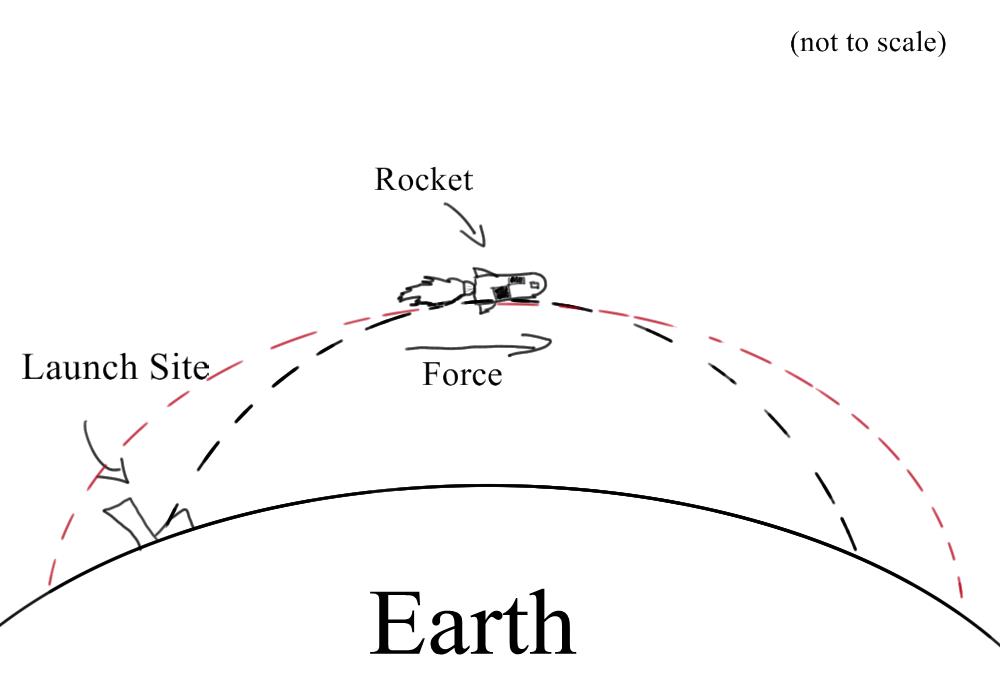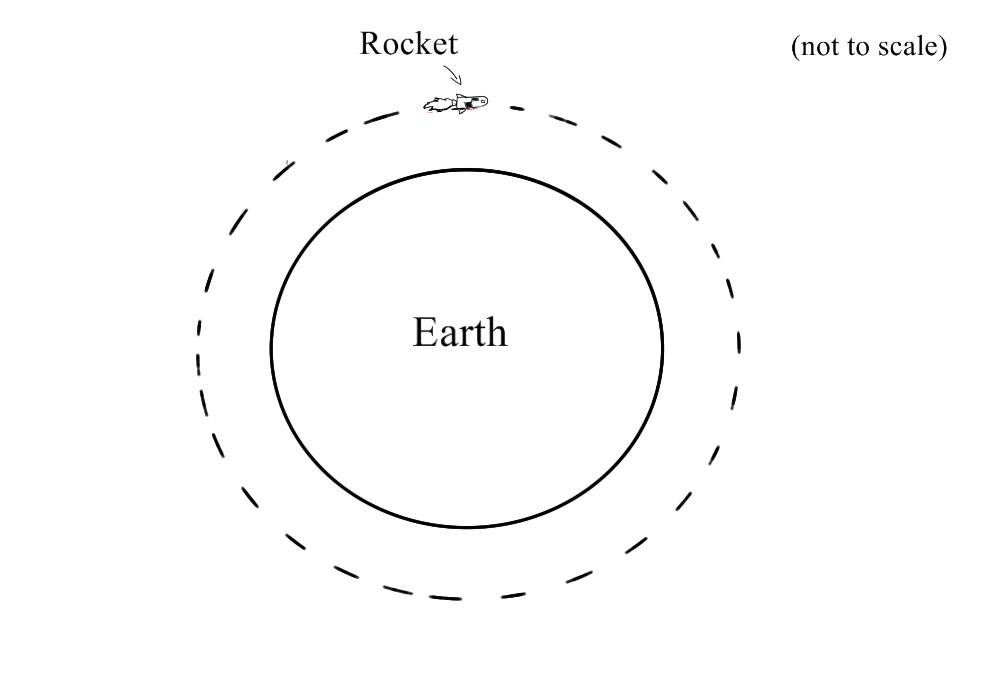It's necesarry to understand the basics of orbital mechanics to understand why sending anything into 'space' is a serious undertaking. And, if you're famliar with phsysics, this means a fairly boring bit of math that has to be worked through to find exact numbers for us to work with. But don't fret, it's not all just useless numbers. they all mean something and have a purpose, which will be explained to as full an extenet is necessarry. So let us begin.
The first thing we need to look at, is what is orbiting anyways? There's a misconception that all one has to do to achieve orbit is to simply sit on a rocket, and go up. Well, they're not technically entirely wrong, but they're also not right at all.
Let's start with the basics of what is happening when one attempts to go into orbit. We'll look at a simple model to explain the concept, and then delve into some of the math to really understand not only how we're to get into orbit, but also what is needed to actually get out rocket there physically.

http://upload.wikimedia.org/wikipedia/commons/3/34/Skylab-73-HC-440HR.jpg
Let's assume you have your rocket ready to go, who cares about getting anything actually useful into orbit right now, let's just get the rocket into space, or as close as we can achieve. This will suit our puroposes just fine. The rocket takes from the launch pad and immediately goes into a parabolic arc in the intended direction of the orbit. (see the sketch to the right). We'll get the maximum altitude of our inteded orbit to a good distance to keep us from slowing down by hittig the atmosphere (known as aerobraking, but we don't really have to worry about that). Once we've gotten there, we move on to Step 2.

Now we've done half of the work, we've mashed our rocket through the atmosphere and we need to get it into an actual orbit. Hey look, we have an engine on the back of our rocket still! Why don't we use that convienient source of thrust for our continued manuevers. All we have to do at this point to get into orbit is to burn in the direction of motion (turns out, best way to do that is to burn close or at the maximum height of our parabolic arc (see the sketch to the right). And we continue this onto an actual orbit, and presto! You have yourself ina stable orbit, in which you can adjust up or down by simple varying your speed on the prograde or retrograde direction (forward or backwards).
From there one can simply adjust the maxiumum and minumum heights of the orbit until you reach your desired altitude. For our solar arrays, we'd want this to be 36,000,000m, which is roughly geostationary orbit around the Earth, the hieght at which the speed you circle aruond the Earth is equal to the Earth's actual rotation, effectively leaving you in one spot at all times over the surface (hence geo-stationary).


So now that we know what technique we're supposed to use to get to orbit, now we need to find things that can do this all for us. To do that needs the dreaded math equations, but quite luckily, we know all the simple equations and techniques needed to find the various components and limitations on our travels. But what do we need to find? Well, in typical calculaitons with orbits, velocity is a key factor in determining what orbit you're going to have. After all, orbiting is simply moving so fast laterally that you just happen to never hit the ground in free fall. This has a pretty big implication. Height of orbit is determined by velocity, and there's a handy little equation that will help us find this velocity we need.
F=ma
That's right. Force=Mass*Acceleration. This may seem a bit too easy, and in a way it is, but there's interesting things that we can do with this equation. Let's take a look at a few more equations. When we're talking about orbiting the Earth in a circular fashion, we have to look at some of these variables in reference to a rotating motion equation. Our force in the equation is the force or gravity which is the force keeping the rocket from flying off into outer space, and using the equation for the force of gravity for a given mass and radius.

Now we have another problem. We need to get velocity into the whole thing as well. So we turn to the mass and acceleration of the equation and we find that for radial motion,

This means that angular acceleration for circular motion is equal to velocity squared over the radius. If we put them all together, with the force/mass*acceleration relationship, we find that,

And thus, to find velocity we have,

Very good, now that we have our velocity to gravity and mass relationship (the large 'M' refers to the mass of the Earth, and not the mass of our rocket) we can find how fast one needs to be moving for the Geostationary orbit to be achieved. We know geostationary orbit is 36,000,000m, (which, r relates to the ccenter of mass of the object, so we'll actually be using the height plus the radius of the Earth here, which comes out to 42,371,000 meters). G is the gravitational constant, which is a value of 6.67x10^-11 (this has very unfortunate units to think about, rest assured, they cancel). And the mass of the earth is 5.97x10^24kg, which is M.
If we push these into our handy dandy TI-84, we find that v=3066.12 m/s. Let's look at that number for a second. A car driving down the highway goes roughly 24 meters per second, close to 55miles per hour. The speed of sound is only 340 m/s. In order to be in geostationary orbit, you need to be moving at least 10 times the speed of sound in a circular orbit! But why do we care in the first place? Now we have a rocket equation that we can solve, which we won't unfortunately, but it's a good example of where the application for this math goes. We're more concerned about the solar array than creating a fake rocket with math.
In any case, the Tsiolkovsky rocket equation is both the boon and the bane of many rocket enthusiasts, and is as follows,

v(e) is the exhaust velocity of the engine (which can also be expressed as specific impulse multiplied by gravity, but we aren't too worried about that right now) and mi is the initial mass of the rocket, and mf is the final mass of the rocket. Hey, look at that. There's also a delta-V in the equation (change in velocity). We want to go that fast, and using this equation, we can actually estimate how much power, mass, and thrust we'll need to do that. Great! But we probably won't revisit that equation, since after now we're going to deal in real world usages, not a fictional rocket. That was just to illustrate how rocket science actually works, and the ease of which even a lay-man with precursory knowledge could use some basic orbital physics to predict things. But, we're on our way into launching our solar arrays into orbit!